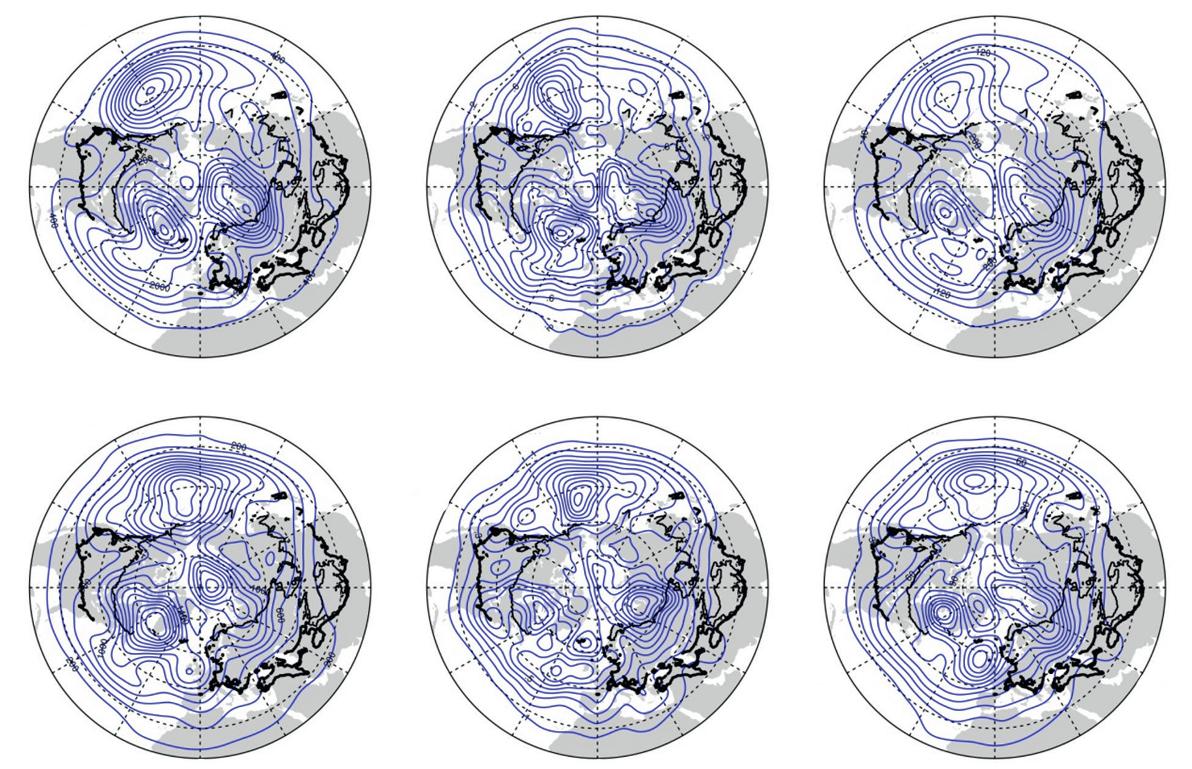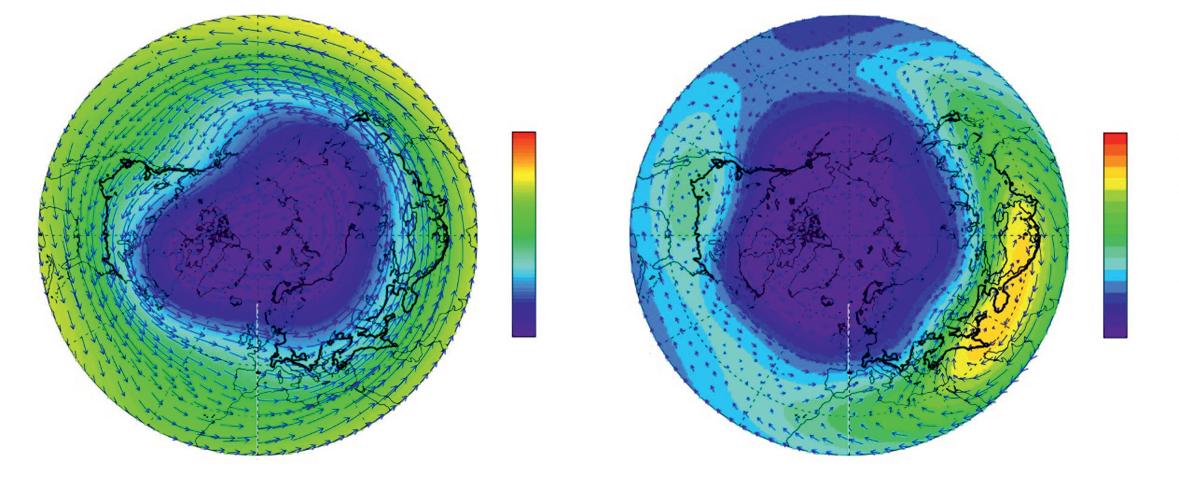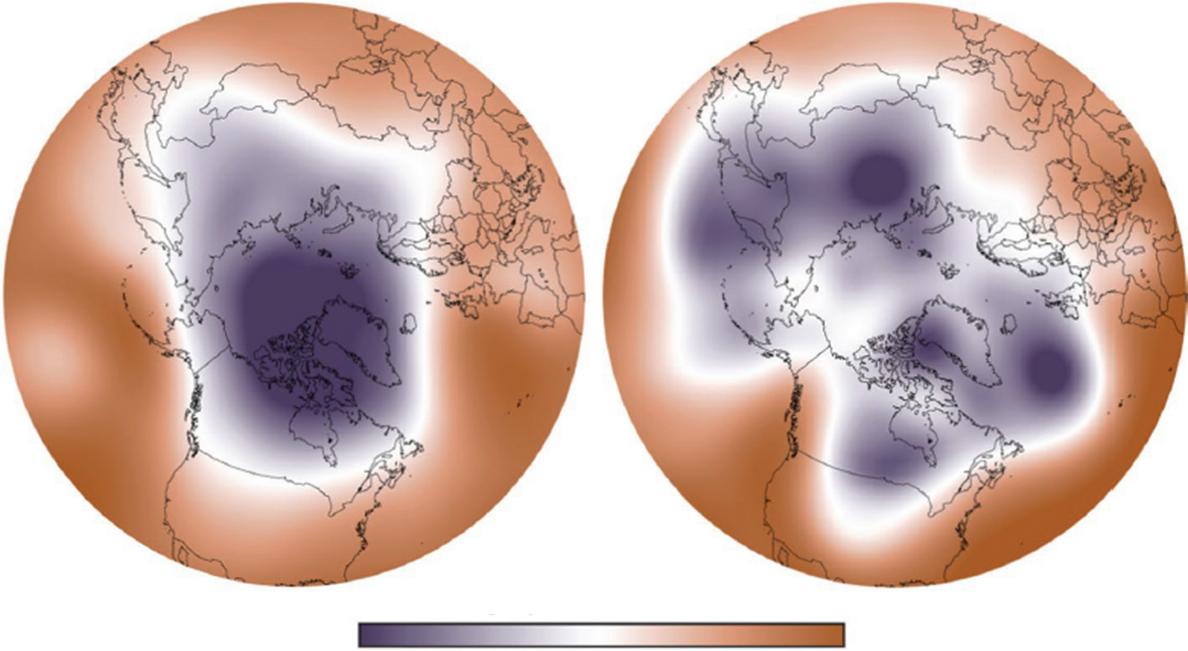Instant digital products (PDF, ePub, MOBI) ready for you
Download now and discover formats that fit your needs...
Global Physical Climatology 2nd Edition Hartmann
https://ebookmass.com/product/global-physical-climatology-2nd-editionhartmann/
ebookmass.com
Beauty and Human Existence in Chinese Philosophy 1st Edition Keping Wang
https://ebookmass.com/product/beauty-and-human-existence-in-chinesephilosophy-1st-edition-keping-wang/
ebookmass.com
The Book of Cold Cases Simone St. James
https://ebookmass.com/product/the-book-of-cold-cases-simone-st-james/
ebookmass.com
Understanding and Using English Grammar (Workbook) 4th Edition Betty S. Azar
https://ebookmass.com/product/understanding-and-using-english-grammarworkbook-4th-edition-betty-s-azar/
ebookmass.com




Fast Desktop-Scale Extrusion Additive Manufacturing (Article, NOT a book) Jamison Go
https://ebookmass.com/product/fast-desktop-scale-extrusion-additivemanufacturing-article-not-a-book-jamison-go/
ebookmass.com
Rogue (Damaged Devils Book 9) Charity Parkerson

https://ebookmass.com/product/rogue-damaged-devils-book-9-charityparkerson/
ebookmass.com
Enthralled (Prince of the Doomed City Book 5) Sylvia Mercedes
https://ebookmass.com/product/enthralled-prince-of-the-doomed-citybook-5-sylvia-mercedes/
ebookmass.com
Sayings of Gorakhnath: Annotated Translation of the Gorakh Bani Gordan Djurdjevic
https://ebookmass.com/product/sayings-of-gorakhnath-annotatedtranslation-of-the-gorakh-bani-gordan-djurdjevic/
ebookmass.com
Learn Azure Synapse Data Explorer: A guide to building real-time analytics solutions to unlock log and telemetry data Rocha
https://ebookmass.com/product/learn-azure-synapse-data-explorer-aguide-to-building-real-time-analytics-solutions-to-unlock-log-andtelemetry-data-rocha/
ebookmass.com




Writer's Choice - Grammar and Composition Grade 6 McgrawHill [Mcgraw-Hill]
https://ebookmass.com/product/writers-choice-grammar-and-compositiongrade-6-mcgraw-hill-mcgraw-hill/
ebookmass.com

Climatology in Cold Regions
Climatology in Cold Regions
Chenghai Wang
School of Atmospheric Sciences
Lanzhou University
Lanzhou, China
This edition first published 2023 © 2023 John Wiley & Sons, Inc.
All rights reserved. No part of this publication may be reproduced, stored in a retrieval system, or transmitted, in any form or by any means, electronic, mechanical, photocopying, recording or otherwise, except as permitted by law. Advice on how to obtain permission to reuse material from this title is available at http://www.wiley.com/go/ permissions.
The right of Chenghai Wang to be identified as the author of this work has been asserted in accordance with law.
Registered Office
John Wiley & Sons, Inc., 111 River Street, Hoboken, NJ 07030, USA
Editorial Office
9600 Garsington Road, Oxford, OX4 2DQ, UK
For details of our global editorial offices, customer services, and more information about Wiley products visit us at www.wiley.com.
Wiley also publishes its books in a variety of electronic formats and by print-on-demand. Some content that appears in standard print versions of this book may not be available in other formats.
Trademarks: Wiley and the Wiley logo are trademarks or registered trademarks of John Wiley & Sons, Inc. and/ or its affiliates in the United States and other countries and may not be used without written permission. All other trademarks are the property of their respective owners. John Wiley & Sons, Inc. is not associated with any product or vendor mentioned in this book.
Limit of Liability/Disclaimer of Warranty
While the publisher and authors have used their best efforts in preparing this work, they make no representations or warranties with respect to the accuracy or completeness of the contents of this work and specifically disclaim all warranties, including without limitation any implied warranties of merchantability or fitness for a particular purpose. No warranty may be created or extended by sales representatives, written sales materials or promotional statements for this work. The fact that an organization, website, or product is referred to in this work as a citation and/or potential source of further information does not mean that the publisher and authors endorse the information or services the organization, website, or product may provide or recommendations it may make. This work is sold with the understanding that the publisher is not engaged in rendering professional services. The advice and strategies contained herein may not be suitable for your situation. You should consult with a specialist where appropriate. Further, readers should be aware that websites listed in this work may have changed or disappeared between when this work was written and when it is read. Neither the publisher nor authors shall be liable for any loss of profit or any other commercial damages, including but not limited to special, incidental, consequential, or other damages.
Library of Congress Cataloging-in-Publication Data applied for Hardback ISBN: 9781119702658
Cover Design: Wiley
Cover Image: © Kirill Skorobogatko/Shutterstock
Set in 9.5/12.5pt STIXTwoText by Straive, Pondicherry, India
Contents
List of Figures viii
List of Tables xi
Foreword xii
1 Introduction 1
1.1 Scope of the Subject and Recent Highlights 1
1.2 Some Definitions and Terms of Reference 1
1.3 Characteristics of Cold Region Climatology 3
1.4 Classification of Cold Region Climatology 4
1.5 Impacts of Cold Regions on Global Climate 5
1.6 Contribution of Cold Regions to Energy Balance 5
1.7 Summary 6
2 Climate in Cold Regions 7
2.1 General Circulation 7
2.2 Low and High Frequency of Atmosphere Variability 8
2.3 Weather Systems 9
2.3.1 The Polar Circulation 10
2.3.2 Polar Vortex 10
2.3.3 Polar Jet 16
2.3.4 Polar Low 17
2.3.5 Blocking High 19
2.3.6 Polar High 20
2.3.7 Stratospheric Sudden Warming 21
2.3.8 Weather Systems on the Tibetan Plateau 25
2.4 Radiation 28
2.4.1 Surface Radiation Budget 28
2.4.2 Aerosol–Cloud-Radiative Effect 36
2.5 Precipitation and Snow 45
2.6 Frozen Ground 47
2.7 Hydrology 48
2.8 Winter Monsoon 49
3 Land-Surface Process in Cold Regions 51
3.1 Land-Surface Characteristics in Cold Regions 51
3.1.1 Overview 51
3.1.2 Sea-Ice Cover 58
3.1.3 Land-Surface Evapotranspiration 60
3.2 Daily and Seasonal Cycle of Freeze–Thaw in Soil 60
3.3 Soil Freezing–Thawing and Snow-Melting Processes and their Hydrothermal Effects 64
3.4 Impacts of Soil Freeze–Thaw Process and Snow Melting on Surface Diabatic Heating 67
4 Land–Atmospheric Interaction in Cold Region 72
4.1 Spring Predictability Barrier 72
4.2 Signal of Climate Prediction in Land Processes in Cold Regions 73
4.3 Improvement of Climate Prediction by Assimilating Land-Surface Signals in Cold Regions 80
4.4 Soil-Moisture Memory in Cold Regions 83
4.5 Soil-Moisture Climate Coupling in Cold Regions 85
4.6 Snow–Climate Coupling in Cold Regions 90
5 Models and Modeling in Cold Regions 91
5.1 Snow and Freeze–Thaw Parameterizations 91
5.2 Hydrothermal Coupling Scheme in Land-Surface Model 98
5.3 Simulation of Land-Surface Process in Cold Regions 103
6 Hydrological Processes in Cold Regions 109
6.1 Glacier Hydrology 109
6.2 Snowmelt Runoff 110
6.3 Frozen Soil and Hydrology 115
6.4 River Ice and Lake-Ice Hydrology 120
6.5 Sea-Ice Hydrology 121
6.6 Sea Ice 122
6.7 Characteristics of Sea Ice Regimes in China 123
6.8 Precipitation Rates on the Tibetan Plateau 124
6.9 Precipitation Recycling on the Tibetan Plateau 133
7 Ecology and Vegetation in Cold Regions 136
7.1 Overview 136
7.2 Ecology and Vegetation Characteristics on the Tibetan Plateau 136
7.2.1 Spatial Distribution of Ecology and Vegetation 136
7.2.2 Vegetation Variations Respond to Climate Change 139
7.3 Ecology and Vegetation Characteristics in Middle and High Latitudes 142
7.3.1 Northern China 142
7.3.2 Europe 144
7.3.3 North America 145
7.4 Ecology and Vegetation Characteristics in the Arctic Region 146
8 The Carbon and Nitrogen Cycle in Cold Regions 149
8.1 Carbon, Nitrogen, and Greenhouse Gases on the Tibetan Plateau 149
8.2 Carbon, Nitrogen, and Greenhouse Gases at High Latitudes 156
8.3 Carbon, Nitrogen, and Greenhouse Gases in the Polar Regions 162
8.4 Outlook 167
9 Climate Disasters in Cold Regions 169
9.1 Overview 169
9.2 Snowmelt Flood 170
9.3 Freezing Rain 173
9.4 Winter Storms 178
9.5 Ice Avalanches 183
9.6 Ice-Jam Floods 187
9.7 Snow Avalanches 191
9.8 Freezing and Thawing Damage 192
9.9 What’s Next 194
10 Climate Changes in Cold Regions 195
10.1 Climate Change in Cold Regions in the Past Decades 195
10.2 Projection of Future Climate in Cold Regions 196
10.2.1 Impact of Soil Moisture on Frozen Ground and its Indicators 202
10.2.2 Changes in Permafrost Extent and Active Layer Thickness in the Twenty-First Century 204
10.2.3 The Soil Thermal and Hydraulic Regimes in Permafrost Regions 206
10.3 Changes of Related Environment Response to Climate Change in Cold Regions 209
10.3.1 Changes of Hydrological Processes 209
10.3.2 Changes of Ecology 211
10.3.3 Changes in Disasters 211
11 Challenges and Outlook 213
11.1 Challenges for Future Study 213
11.2 Conclusion 214
Appendix 216 Bibliography 219 Index 269
List of Figures
Figure 1.1 Definition of colds regions 2
Figure 1.2 Distribution of precipitation in cold regions 3
Figure 1.3 Distribution of near-surface air temperature in cold regions 4
Figure 1.4 Comparisons of precipitation and near-surface air temperature 5
Figure 2.1 The geopotential height and horizontal wind 8
Figure 2.2 Latitude–pressure cross–sections of temperature zonal deviation and vertical circulation 8
Figure 2.3 The variance of geopotential height in winter and spring 9
Figure 2.4 Fields of mean 30hPa geopotential height 11
Figure 2.5 The geopotential height and horizontal wind 12
Figure 2.6 Contrasting geopotential height fields 12
Figure 2.7 NOAA-9 satellite image of the polar low’s incipient stage 17
Figure 2.8 Decadal variability of stratospheric sudden warming events 23
Figure 2.9 The vertical profile structure of the tropical cyclone-like Tibetan Plateau vortex 26
Figure 2.10 Shear lines over the Tibetan Plateau 27
Figure 2.11 The various radiative mechanisms associated with aerosol-cloud interactions 37
Figure 2.12 Distribution of summer precipitation 45
Figure 2.13 Distribution of winter snow depth 46
Figure 2.14 Distribution of permafrost and extent of permafrost and seasonally frozen ground 47
Figure 2.15 Distribution of climatological seasonally frozen ground 48
Figure 2.16 Distribution of snow melting 49
Figure 2.17 Spatial distribution of sea-level pressure 50
Figure 3.1 Mean sea-ice extent for March and September 52
Figure 3.2 Physiography of the Arctic lands 53
Figure 3.3 Distribution of Arctic polar desert and approximate southern limit of tundra 54
Figure 3.4 Average number of weeks of snow cover in the northern hemisphere 55
Figure 3.5 Annual evapotranspiration for the terrestrial region 60
Figure 3.6 Diagram of the soil freeze–thaw process 61
Figure 3.7 Seasonal cycle of the soil freeze–thaw process 62
Figure 3.8 Diurnal cycle of the soil freeze–thaw process 63
Figure 3.9 Variations of soil hydrothermal properties in the freeze–thaw process 65
Figure 3.10 Effects of the soil freeze–thaw process on soil-moisture variations 66
Figure 3.11 Variations of monthly surface-sensible and surface-latent heat fluxes during the freeze–thaw process 67
List of Figures x
Figure 7.3 Plant physiognomy occurring in different tundra bioclimate subzones 148
Figure 8.1 The model and mainly influencing factors for carbon transfer in the earth surface ecosystems 150
Figure 8.2 Schematic diagram of annual carbon partitioning in diverse carbon pools in the K alancohe humilis meadow plant–soil system representing the annual carbon fluxes 151
Figure 8.3 A conceptual model of the relationship among the environmental conditions and the contribution of variables to the soil organic carbon stocks 153
Figure 8.4 Key disturbance processes impacting northern high-latitude soil organic carbon stocks and feedback between them 158
Figure 8.5 The distribution of soil organic carbon 159
Figure 8.6 The current state of the Arctic carbon cycle 165
Figure 8.7 Key factors controlling gaseous nitrogen input and output pathways in Arctic ecosystems 166
Figure 9.1 Snowmelt flooding 170
Figure 9.2 The formation of the snowmelt flood 171
Figure 9.3 Freezing rain 173
Figure 9.4 Freezing rain falls when snowflakes melt completely before reaching the surface 174
Figure 9.5 Distribution of freezing rain in China 175
Figure 9.6 Maximum number of hours with freezing rain in a single year 177
Figure 9.7 Winter storm precipitation from the US National Oceanic and Atmospheric Administration 179
Figure 9.8 Snow storm 180
Figure 9.9 Annual mean snowfall days and freezing days 181
Figure 9.10 Three stages in the formation of an ice avalanche 184
Figure 9.11 Schematic diagram of river-ice jam and associated backwater level 190
Figure 9.12 Reported historical decline in ice cover duration in rivers in the northern hemisphere 191
Figure 10.1 Linear trend of January and annual mean surface air temperature 196
Figure 10.2 Time series of the maximum depth of frost penetration 197
Figure 10.3 Absolute change in permafrost extent in the northern hemisphere 199
Figure 10.4 Projected changes in mean annual snow-water equivalent over northern-hemisphere land 200
Figure 10.5 The partial correlations between active layer thickness in the persistent permafrost regions and snow depth 202
Figure 10.6 The correlation coefficients between soil moisture and observed maximum depth of frozen ground 203
Figure 10.7 The estimated permafrost extent based on Climatic Research Unit data and Kudryavtsev’s method 203
Figure 10.8 The partial correlations between active layer thickness in the persistent permafrost regions and snow depth 204
Figure 10.9 The estimated mean permafrost extent from six models’ ensemble mean for the three representative concentration pathways 205
Figure 10.10 The changes in active layer thickness 209
Figure 10.11 The partial correlations between active layer thickness in persistant permafrost regions 210
List of Tables
Table 3.1 Major Arctic ice caps 54
Table 5.1 The root mean square errors of soil temperature and soil moisture 93
Table 5.2 The magnitude of variables in the heat conduction equation 106
Table 5.3 The magnitude of variables in the modified Richards equations 107
Table 7.1 Ecosystem cover area 137
Table 8.1 Carbon and nitrogen and its transport to atmosphere in cold regions 167
Introduction
Cold regions are special geographical units. Climate characteristics on a global scale have become well known, and regional climate features have attracted more and more attention. This chapter will define cold regions and types of cold region, to illustrate climate characteristics in cold regions.
1.1 Scope of the Subject and Recent Highlights
The climate in cold regions is a new, interdisciplinary, subject that is concerned with the climate and its changing in cold regions over the earth’s atmosphere system. It focuses mainly on the highaltitude and middle-high latitude geosciences and their physics, chemistry, and fluid dynamics.
Many large-scale climate characteristics and processes have been understood, particularly entering the twentieth century. The climate in limited and specific regions has recently attracted more attention.
There is mounting evidence that the human activity has been influenced on climate, ecology, and biological systems. For instance, researches revealed that temperatures in cold region rise twice times faster than in middle-low latitude; the minimum temperature rises faster than the maximum temperature. One more concern is the glacial retreat and frozen ground degeneration. Particularly, more and more attention has been paid to Arctic ice melting and relevant Arctic “amplification.”
Cold is a relative concept to warm. The climate can be roughly divided according to latitude into tropical, sub-tropical, and polar regions. Cold regions can be found in high-altitude areas and high mountains. Cold means a region lacks of solar radiation, in other words, where surface-energy negative balance, and absorbing less radiation than what is being released.
Owing to latitudinal differences in the distribution of solar radiation, there are latitudinal zones in which the climate varies regularly according to latitude. The globe is divided into multiple climate zones according to the characteristics of fundamental climate indicators (e.g. surface air temperature and precipitation).
1.2 Some Definitions and Terms of Reference
Cold regions are generally regarded as the cold environment in both polar regions and more temperate locations, which are closely related to the cryosphere. The areas covered by stable seasonal snow is usually considered to be cold regions. In that case, cold regions consist of glaciers, ice caps,
Climatology in Cold Regions, First Edition. Chenghai Wang. © 2023 John Wiley & Sons, Inc. Published 2023 by John Wiley & Sons, Inc.
transport and variations of surface diabatic heating, which makes the climate in this region unique. Consistent with essential awareness, this region is also covered with snow, while the maximum extent of the snow-cover basically coincides with the zero isothere line of the January mean temperature. In the next two sections, the characteristics of climatology in cold regions and their discrepancies will be introduced.
1.3 Characteristics of Cold Region Climatology
According to the world map of the Köppen- Geiger climate classification, cold regions cover the snow zone, and polar zone, while the characteristics of precipitation and temperature have distinct spatial differences. The climate in a region is closely related to the variations of precipitation and temperature, which decides the formation of the climate. The following sections will analyze the temporospatial characteristics of precipitation and near-surface temperature.
Compared with the tropics or summer monsoon regions, precipitation in winter and summer in cold regions is obviously less, especially in winter. The annual mean precipitation in winter is only 100–150 mm; in the western region of North America, eastern Siberia, and northern China, the annual mean winter precipitation is less than 50 mm. In summer, the mean precipitation is about 200–300 mm (Figure 1.2). The distribution of precipitation has a distinct spatial difference in cloud regions; precipitation in high latitudes is greater than mid-latitudes in both winter and summer, and winter precipitation in northern Europe is greater than summer precipitation.

Figure 1.2 Distribution of precipitation (mm) for winter (December–January–February, DJF) (upper panel) and summer (June–July–August, JJA) (lower panel) in cold regions in the northern hemisphere.
Figure 1.4 Comparisons of precipitation (mm, bar) and nearsurface air temperature (°C, lines) between high latitudes (permafrost and seasonally frozen ground regions, SFG) and high altitudes (e.g. the Tibetan Plateau (TP) cold regions.)
Cold region of permafrost
Cold region of SFG
Cold region of TP

be divided into two categories, the region of permafrost, the region of SFG. According to geographical location, it can be divided into polar regions, middle and high latitudes and the Tibetan Plateau (TP).
Comparing the precipitation and near-surface temperature between high latitudes (permafrost) and SFG and high altitudes (TP) in cold regions (Figure 1.3), it is clear that near-surface monthly temperature in the permafrost region is generally lower than that in the SFG region, and the nearsurface temperature in the TP is higher than that in the permafrost region, but lower than the SFG. The variations of near-surface temperature have distinct dependence on the variation of latitude and altitude. Monthly precipitation in the SFG region is generally greater than that in the permafrost region, which is concentrated between August and October. In contrast, the precipitation in the permafrost region is concentrated between July and September. The annual variations of precipitation in the TP are different from the cold regions in high latitudes (Figure 1.4), which is concentrated between June and August with 60–80 mm, and its amount is more than that of the permafrost regi9on, but less than that in the SFG region. Comparing the annual variations of precipitation and near-surface temperature in three different cold regions, these have distinct differences.
1.5 Impacts of Cold Regions on Global Climate
On average, the temporal scale of energy (heat), moisture, and matter exchange between land and atmosphere is shorter in tropical regions than in cold regions. In tropical regions, the interaction between oceanic surface and atmosphere has quick and short features. In tropical areas, convective precipitation and tropical cyclones (typhoons or hurricanes) frequently occur, with smaller monthly change features than in sub-tropical regions. These probably result as an energy export to tropical regions. The natural function of the cold region is energy accumulation. According to this theory, cold regions are more likely to be energy hoarders for seasonal climate change.
1.6 Contribution of Cold Regions to Energy Balance
In addition to the energy from solar radiation, there is an inter-conversion of energy in the climate system. The heat absorbed from surface radiation balance in colds region would be stored in soil, and adjusted by soil moisture and soil heat capacity of different soil kinds. Energy will be released to the atmosphere in summer when evaporation becomes significant. This process corresponds to ground freezing and thawing.
Climate in Cold Regions
The climate in cold regions is unique. Due to low temperature, the weather, climate, and their influence factors have obvious differences compared with subtropical and tropical regions. This chapter will present the characteristics of general circulation, the primary weather systems (including permanence and semi-permanence), meteorological elements, land–surface (including the distribution and changes in frozen ground, hydrology, and ecology), and winter monsoon in cold regions.
2.1 General Circulation
There are two basic factors that determine the general circulation of Earth’s atmosphere: the latitudinal change of energy received by the Earth–atmosphere system from the sun, and the global uneven distribution of angular momentum of the atmosphere. General circulation on Earth is mainly due to the uneven heating of Earth’s surface. Earth’s energy balance involves incoming solar radiation and outgoing thermal infrared radiation, which together make up the net radiation (NR). The global general circulation, pressure distribution, and wind patterns play an integral role in the heat balance of Earth and the formation of global ocean currents. In the global general circulation, warm air is transported from lower latitudes to higher latitudes and cold air from high latitudes to low latitudes. This heat exchange keeps global temperatures relatively stable. Low latitude region is net incoming energy throughout the year as a result of continuous heating, and high latitudes are colder as a result of continuous cooling due to net energy loss.
Cold region is a product of regional stationary sate in general circulation evolution. According to the results of geopotential height and horizontal wind at 500 hPa in January and July (Figure 2.1), the general circulation shows obvious seasonal variations. The position of the troughs and ridges in winter and summer is essentially stable or gradually changing, and occupies a considerable part of the year, while it is relatively short in the two transitional seasons (spring and autumn). In midlatitudes, the general circulation behaves as a flat westerly wind; both the geopotential height and the horizontal wind in winter (January) are larger than that in summer (July). That is, there are three troughs and ridges in the middlehigh latitude westerly in winter, four trough ridges in summer, the so-called “winter three summer four”. Due to the spatial discontinuity of global cold regions, some cold regions have regional and local scales, which induce local circulation/cells, for instance, the valley wind. A prominent regional scale cell is the monsoon cell on the southern Tibetan Plateau (TP), which is an indicator for the eastern Asian summer monsoon (Figure 2.2). Also, the high altitude of TP induces many regional cells in the west, east, north, and south directions, which influence the climate regime in eastern Asia. While wind passes across the underlying surface in cold regions, such as glaciers, snow, and
Climatology in Cold Regions, First Edition. Chenghai Wang.
© 2023
John Wiley & Sons, Inc. Published 2023 by John Wiley & Sons, Inc.

Figure 2.3 The variance of the unfiltered (left), 2.5–6-day filtered (middle), and 10–90-day filtered (right) geopotential height at 100 hPa in winter (upper) and spring (down).
Pacific, North Atlantic, and Siberia, respectively. The evolution pattern of the 10–90-day filtered geopotential height is more similar to the evolution pattern of the unfiltered geopotential height than that of the 2.5–6-day filtered geopotential height. Meanwhile, the evolution of the 10–90-day filtered geopotential height is much greater than that of the 2.5–6-day filtered geopotential height. It means that the interannual variation of geopotential height in winter and spring is mainly dominated by the low-frequency variation. It is also clear that the evolution of the 10–90-day filtered geopotential height is the main contributor over the land around North Atlantic and Siberia. This suggests that land surface in cold regions plays an important role in the interannual variation of geopotential height in winter. This effect can persist from winter to spring, though the distribution of geopotential height evolution has some changes due to land-sea thermodynamic differences.
The 2.5–6-day eddy is very active in the middle-latitude North Pacific and North Atlantic, which is called the storm track. The 2.5–6-day eddy involves strong momentum and heat flux, which causes the interaction between wave and flow in the storm track. The low-frequency Rossby wave train triggered by the cold region in spring can persist during the summer and influence the summer climate.
2.3 Weather Systems
General circulation usually refers to the mean state of large-scale and long-term atmospheric movement or the change processes of a specific period. The horizontal scale is larger than several thousand kilometers; the vertical scale is larger than 10 km, and the temporal scale is longer than 106 hours. This large-scale atmospheric movement not only restricts large-scale weather changes,

Figure 2.4 The mean geopotential height (gpm) at 30 hPa for the four mid-season months over 1981–2010, based on ERA5 data.
eastern North America and a weak ridge located in western North America. In spring, the vortex center has shifted well off the North Pole to north-central Eurasia.
In summer and above about 20 km, the cyclonic vortex has broken down. There is a polar easterly flow around a highly symmetric warm polar anticyclone. In summer, an easterly jet of about 60 m s−1 at 0.1 hPa is located at around 50–60°N. The October wind field illustrates the transition back toward the winter situation.
As discussed by Holton (2004) and Andrews et al. (1987), if there were no transports arising from the breaking of atmospheric waves propagating upwards from the troposphere, the zonalmean temperature of the stratosphere would become to a radiatively determined state, with the temperature distribution corresponding to an annually varying thermal equilibrium that follows the annual cycle in solar heating. The circulation would hence represent a zonal–mean flow in balance with the meridional temperature gradient (a thermal wind balance), with essentially no meridional or vertical circulation and no stratosphere–troposphere exchange.

Figure 2.5 The geopotential height (gpm, color) and horizontal wind (m s−1, vector) at 100 hPa in January (left panel) and July (right panel).
More typical, compact configuration November 14–16, 2013
(b) Wavy polar vortex configuration January 5, 2014

Figure 2.6 Comparison of geopotential height fields at the lower jet stream level (500 hPa) with low values in purple and the jet stream in white. (a) A single and more west to east jet stream encircling the pole contrasts with a more undulating configuration (b) with multiple low height centers (dark purple).
Source: NOAA / United States Department of Commerce / Public Domain.
The existence of a westerly vortex in winter and an easterly vortex in summer is qualitatively that expected from radiative equilibrium, the climate in winter actually shows considerable departures from the radiatively determined state. In the 30–60 km region, the change in temperature from the winter pole to the summer pole is much smaller than the radiatively determined gradient. This is due to eddy transports that drive the flow away from a state of radiative
